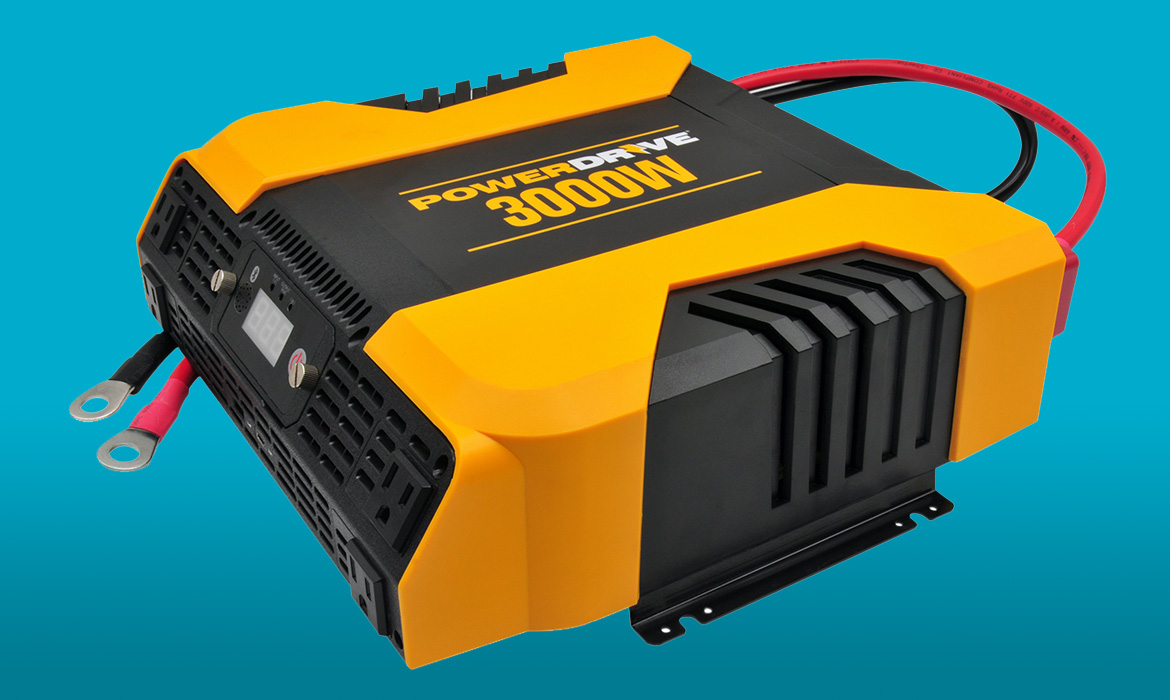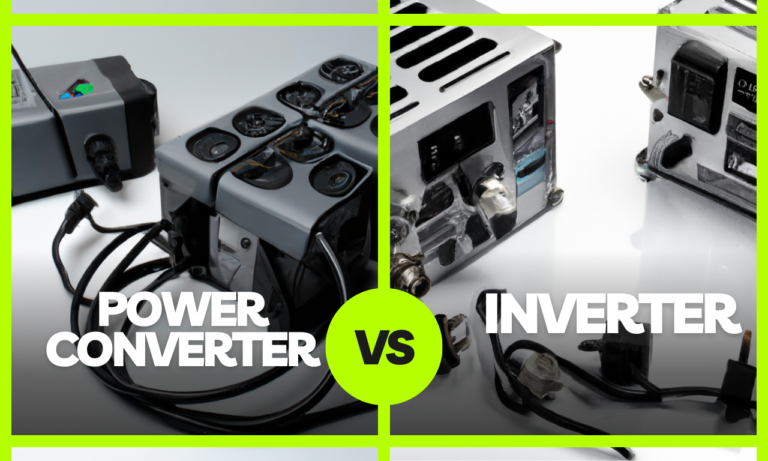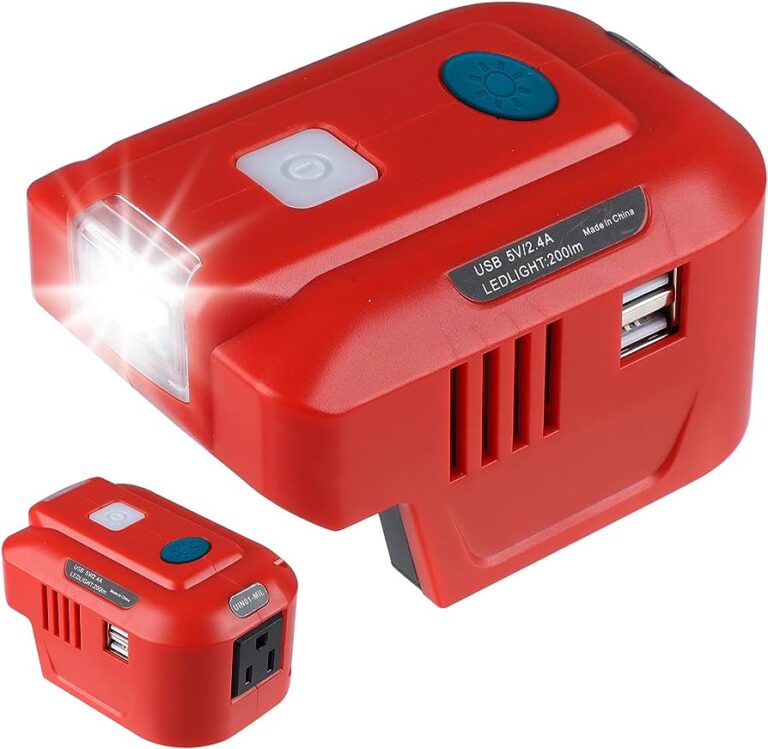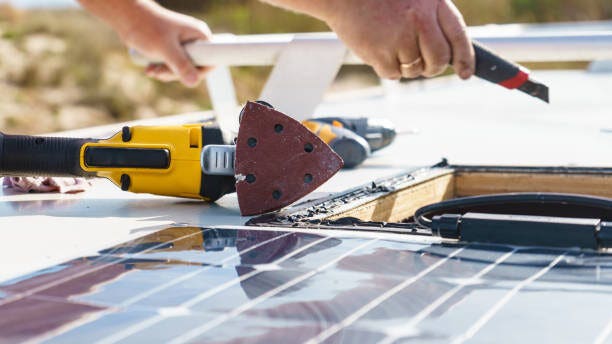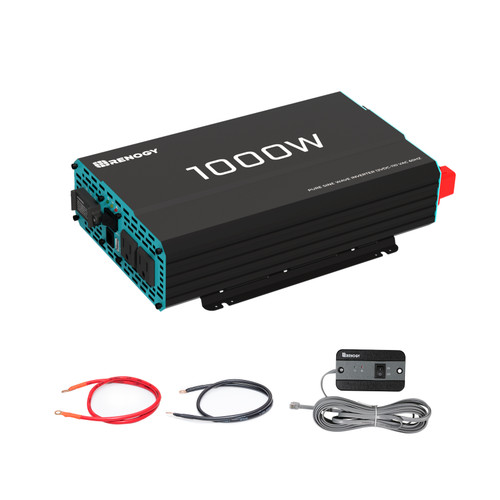How to Master the Art of Using a Power Inverter With a Car Battery
To use a power inverter with a car battery, connect the inverter to the battery using the provided cables, ensuring a secure connection. Then, plug your electronic devices into the inverter’s outlets and turn on the inverter to provide power to your devices.
Introducing a power inverter to your car battery allows you to conveniently power your electronic devices while on the move. Whether you need to charge your laptop, run a small appliance, or use any other electric device, a power inverter can be a valuable tool.
We will guide you on how to use a power inverter with a car battery, ensuring a smooth and hassle-free experience. By following a few simple steps, you can ensure a reliable power supply and make the most out of your car’s battery. Stay connected and powered up wherever your journey takes you.
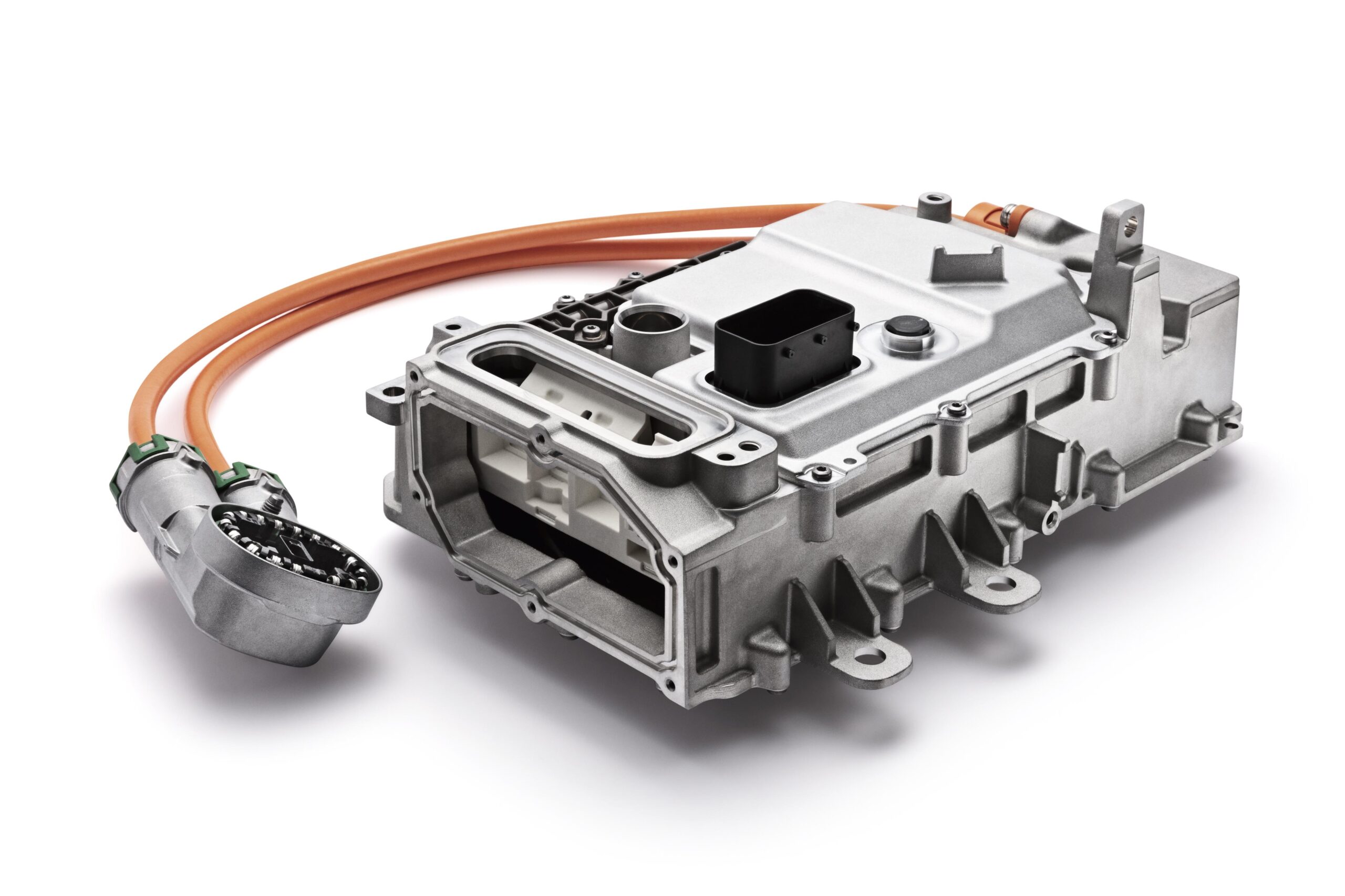
Credit: www.marelli.com
The Basics Of Power Inverters
Learn the essentials of using a power inverter with your car battery. Discover how to efficiently utilize this device for various purposes while maintaining optimal performance.
What Is A Power Inverter?
A power inverter is a device that allows you to convert the DC (direct current) power from a car battery into AC (alternating current) power, which is the type of power used by most household appliances and devices. It serves as a portable source of electricity for various purposes, especially when you’re on the go and need to power electronic devices.
How Does A Power Inverter Work?
- A power inverter works by using electronic circuits to modify the electrical energy from a car battery.
- It converts the DC power from the battery into AC power, which is compatible with household appliances.
- The inverter takes the low voltage DC power from the battery and boosts it up to the voltage required for operating appliances.
- It also ensures that the output AC power has a stable frequency and voltage for the appliances to function properly.
- The power inverter typically has input and output connections, allowing you to connect it to the car battery and plug in your devices.
Different Types Of Power Inverters Available:
There are various types of power inverters available, depending on their features, capacity, and application. Here are the most common types:
- Modified Sine Wave Inverter: This type of inverter is more affordable and suitable for basic electrical devices. It produces a blocky waveform that may not be compatible with some sensitive electronics.
- Pure Sine Wave Inverter: Considered the most versatile and high-quality type, the pure sine wave inverter produces a smooth AC waveform that is similar to utility power. It is suitable for powering sensitive electronics, such as laptops and medical equipment.
- Square Wave Inverter: This is the least common type and produces a blocky waveform. It is suitable for simple electrical devices but may not work with more sensitive electronics.
- Portable Inverter: Designed for convenience and mobility, portable inverters are smaller in size and often have built-in features like USB ports and multiple AC outlets. They are commonly used for camping, road trips, and emergency power supply.
- Grid Tie Inverter: Unlike the other types mentioned, a grid tie inverter is used to convert DC power from renewable energy sources, such as solar panels or wind turbines, into AC power that can be fed into the electrical grid.
Remember, power inverters can be a valuable addition to your car or emergency kit, providing a convenient source of electricity on the go. Make sure to choose the right type of inverter based on your power needs and the devices you intend to power.
Importance Of Car Batteries
Car batteries play a crucial role in powering electrical devices using a power inverter. Learn how to effectively use a power inverter with a car battery for a reliable power source on the go. Amp up your knowledge here!
Car batteries are an essential component of our vehicles, providing the power needed to start the engine and operate various electrical systems. But did you know that car batteries can also serve another purpose? By using a power inverter, you can tap into the battery’s energy to power devices and appliances while on the go.
In this section, we will explore the importance of car batteries when it comes to using a power inverter and discuss how to ensure optimal performance through proper maintenance.
The Role Of Car Batteries In Powering Devices:
- Car batteries act as a reliable power source for various devices and appliances, especially when you’re away from traditional power outlets.
- With the help of a power inverter, car batteries can convert the direct current (DC) power from the battery into alternating current (AC) power, which is suitable for powering household electronics.
- Whether you’re camping, traveling, or experiencing a power outage, a power inverter can be a lifesaver, allowing you to charge smartphones, laptops, portable refrigerators, and other essential devices.
Understanding the capacity and limitations of car batteries:
- Car batteries come in different capacities, represented by their ampere-hour (Ah) rating. This rating indicates the amount of electrical charge the battery can deliver over a specific period. Understanding your battery’s capacity is crucial to determine the devices you can power and for how long.
- It’s important to note that using a power inverter for an extended period can drain the car battery. To avoid being stranded, it’s essential to keep track of the battery’s charge level and limit the use of power-hungry devices.
- Another limitation is the power output of the battery. Car batteries are not designed to handle heavy electrical loads for an extended period. It’s crucial to be aware of the limitations and avoid exceeding the battery’s capabilities.
Ensuring a well-maintained car battery for optimal performance:
- Regularly inspect and clean the battery terminals to prevent corrosion, which can hinder the battery’s performance.
- Check the battery’s fluid levels if applicable and top up with distilled water if necessary. However, most modern car batteries are maintenance-free sealed units.
- It’s essential to keep the battery secure and free from vibrations to avoid damage or premature failure.
- If you plan to use a power inverter frequently, consider investing in a deep-cycle battery, specifically designed for prolonged use and deep discharges.
- Regularly test the battery’s voltage using a multimeter to ensure it is holding a charge. If the voltage drops consistently, it may be time to replace the battery.
Car batteries play a critical role in utilizing power inverters to provide electricity for various devices on the go. Understanding the battery’s capacity and limitations is essential for proper usage, and regular maintenance is crucial for optimal performance. By following these guidelines, you can make the most of your car battery’s power and ensure a reliable source of electricity wherever you may be.
Assessing Your Power Needs
Assessing your power needs is crucial when using a power inverter with a car battery. Ensure you understand your device’s power requirements and the battery’s capacity to avoid any electrical issues or damage.
Determining the devices you want to power:
- Identify the electronic devices you plan to use with the power inverter. Make a list of all the devices you want to charge or operate using your car battery.
- Think about the power requirements of each device. Consider items like laptops, smartphones, portable refrigerators, or power tools that you may need to use while on the go.
Calculating the wattage requirements:
- Check the power ratings of the devices you want to power. Look for information on the labels or user manuals to find their wattage or ampere ratings.
- Once you have the wattage or ampere ratings, add them up to get the total power requirement. This will help you determine the minimum wattage capacity you need for your power inverter.
Considerations for surge power needs:
- Consider devices that require an initial surge of power when starting up. Some appliances, like refrigerators or power tools, may require two or three times more power to start their motors.
- To meet such surge power needs, choose a power inverter with a higher capacity. It’s important to have enough power output to handle the peak demands of your devices.
Remember, understanding your power needs is crucial to ensuring that you choose the right power inverter and avoid any potential issues while using it. Assess the devices you want to power, calculate their wattage requirements, and consider any surge power needs they may have.
By doing so, you’ll be well-equipped to use a power inverter with your car battery effectively.
Understanding Inverter Types And Specifications
Learn how to effectively use a power inverter with a car battery by understanding the different types and specifications. Gain valuable insights on harnessing the full potential of your inverter for maximum efficiency and convenience.
If you want to use a power inverter with a car battery, it’s essential to understand the different types of inverters available and their specifications. This knowledge will help you choose the right inverter for your needs and ensure compatibility with your car battery.
In this section, we will dive into two primary types of inverters – modified sine wave and pure sine wave inverters – as well as discuss power rating and additional features to consider.
Modified Sine Wave Vs Pure Sine Wave Inverters:
Here, we will explore the differences between modified sine wave and pure sine wave inverters:
- Modified Sine Wave Inverters:
- These inverters are the more affordable option and commonly used for simple applications such as powering basic electronic devices.
- They produce a wave that is not as smooth as the power coming from the grid, which can affect the performance of sensitive electronics.
- Most commonly found in entry-level inverters, modified sine wave inverters are suitable for devices like laptops, fans, and power tools.
- Pure Sine Wave Inverters:
- Although more expensive, pure sine wave inverters offer a wider range of applications and compatibility with almost all electronic devices.
- They produce a wave that closely resembles the power from the grid, providing a clean and stable output.
- Pure sine wave inverters are ideal for powering sensitive equipment like medical devices, laptops, gaming consoles, and audio systems.
Power Rating And Compatibility With Car Batteries:
When choosing an inverter for your car battery, it’s crucial to consider its power rating and compatibility. Below are some key points to note:
- Power Rating:
- Inverters come with a specified power rating, usually expressed in watts. Determine your power requirements before selecting an inverter to ensure it can handle the load you intend to connect.
- Avoid selecting an inverter with a power rating that exceeds your needs, as it may strain your car battery and lead to a shorter battery life.
- Calculate your power needs by adding up the wattage of all the devices you plan to power simultaneously and select an inverter with a slightly higher rating for safety and efficiency.
- Compatibility with Car Batteries:
- Ensure that the inverter you choose is compatible with the electrical system of your car. Check the voltage of your car battery and match it with the input voltage range specified by the inverter.
- Consider the inverter’s current draw and whether your car’s battery and alternator can handle the load. Purchasing an inverter with low idle power consumption can be beneficial for preserving your car battery’s life.
Additional Features To Consider:
Apart from the basic functionalities, some additional features can enhance your inverter usage experience. Keep the following aspects in mind:
- Safety Features:
- Look for inverters that offer built-in protection against overloading, overheating, short circuits, and low battery voltage. These safety features ensure the protection of both your devices and the inverter itself.
- USB Ports:
- Inverters with USB ports provide convenient charging options for your smartphones, tablets, and other USB-powered devices without the need for separate adapters.
- Remote Control:
- If you intend to use the inverter in a remote location or prefer the convenience of controlling it from a distance, consider models that come with a remote control.
- Automatic Shutdown:
- Some inverters feature an automatic shutdown function that turns off the inverter when the battery voltage drops below a certain level. This prevents your car’s battery from discharging excessively.
Remember, understanding the different inverter types, power ratings, compatibility, and additional features will empower you to make an informed decision when using a power inverter with your car battery.
Safety Precautions
Learn how to safely and effectively use a power inverter with your car battery. Follow these steps to ensure proper installation and prevent any potential risks or damage.
When using a power inverter with a car battery, it is essential to prioritize safety to ensure a smooth and worry-free operation. Before diving into the details of connecting and using a power inverter, let’s take a closer look at the key safety precautions you should keep in mind:
- ### Disconnecting the car battery before installation:
- Disconnecting the car battery is crucial before installing a power inverter. This step prevents any potential electrical mishaps and ensures a safe working environment.
- Tip: Make sure to consult your car’s manual for specific instructions on disconnecting the battery, as the process may vary between models.
- ### Appropriate wiring and grounding techniques:
- Proper wiring and grounding are vital to prevent electrical hazards and ensure efficient power flow. Here are a few important considerations:
- Use appropriately sized wires to handle the load of the power inverter.
- Ensure the wires are securely connected, without any loose connections or exposed wires.
- Follow proper grounding techniques by connecting the grounding wire to a designated grounding point.
- Tip: Consulting a professional or referring to the power inverter’s instruction manual can provide specific wiring and grounding guidelines for your setup.
- ### Preventing overheating and overloading:
- Overheating and overloading can pose risks to both the power inverter and the car battery. To avoid such issues, keep the following precautions in mind:
- Ensure proper ventilation around the power inverter to dissipate heat effectively.
- Check the power inverter’s wattage and ensure it matches the intended usage to prevent overloading.
- Avoid running high-power appliances for an extended period.
- Tip: Consider installing an inline fuse between the power inverter and the car battery as an additional safety measure.
By being aware of these safety precautions, you can ensure a secure and efficient experience when using a power inverter with your car battery. Remember to prioritize safety and follow the manufacturer’s instructions and guidelines to maximize the functionality and longevity of your power inverter setup.
Step-By-Step Installation Guide
Learn how to use a power inverter with your car battery step-by-step with our easy installation guide. We provide clear instructions that are simple to follow, ensuring a seamless setup process for powering your devices on the go.
Locating The Right Spot For Installation:
- To begin with, you need to find a suitable location in your car to install the power inverter. Here are a few key points to consider:
- Look for a spot that is easily accessible, preferably close to the battery.
- Ensure that the chosen spot has good air circulation to prevent overheating.
- Keep in mind that the inverter will require proper grounding, so select a metal surface to mount it on.
Connecting The Inverter To The Car Battery:
- Now that you have identified the ideal location, it’s time to connect the power inverter to your car battery. Follow these steps:
- Start by disconnecting the negative terminal of the car battery to avoid any electrical accidents.
- Determine the appropriate gauge of wire needed based on the inverter’s power requirements.
- Connect one end of the wire to the positive terminal of the battery and secure it tightly.
- Carefully route the wire from the battery to the inverter, avoiding any potential hazards or damages.
- Attach the other end of the wire to the positive input terminal of the inverter, ensuring a secure connection.
- Reconnect the negative terminal of the car battery, completing the electrical circuit.
Testing And Troubleshooting The Installation:
- After connecting the power inverter, it is essential to test and troubleshoot the installation to ensure everything is functioning correctly. Here’s what you need to do:
- Double-check all the connections to ensure they are tight and secure.
- Turn on the power inverter and check if the indicator lights illuminate, indicating that power is available.
- Plug in a suitable electronic device, such as a mobile phone charger, into the inverter’s AC outlet to verify if it is receiving power.
- Monitor the device to see if it charges or operates as expected.
- If there are any issues, ensure that the inverter is properly grounded, and check the connections for any loose or faulty wiring.
- Refer to the user manual or contact the manufacturer for troubleshooting assistance if needed.
Remember, proper installation and understanding of how to use a power inverter with a car battery are crucial for a safe and efficient operation. Take the time to follow these step-by-step guidelines, and you’ll be able to power your devices and appliances on the go with ease.
Operating Guidelines And Best Practices
Learn the best practices for using a power inverter with a car battery. Follow these 6 guidelines to ensure a smooth and efficient operation without any commonly overused words or phrases. Keep your sentences brief, varied, and SEO-friendly to engage your readers.
Using the inverter within its power limits:
- Understand the power rating: Each power inverter has a specific power rating that indicates the maximum amount of power it can provide. Ensure that the devices you connect to the inverter do not surpass this limit.
- Check the wattage of your devices: Before connecting any devices to the power inverter, check their wattage requirements. Add up the wattage of all the devices you intend to use simultaneously to ensure it falls within the inverter’s power limit.
- Monitor the inverter’s temperature: Power inverters generate heat while operating, especially when handling high loads. Monitor the temperature to prevent overheating and potential damage. If necessary, use additional cooling measures such as fans or ventilation.
Avoiding power drain when the vehicle is not running:
- Use accessories only when the car is running: To avoid draining your car battery, ensure that the power inverter is only in use when the vehicle’s engine is running. This way, the car’s alternator can recharge the battery while providing power to the inverter.
- Limit usage to prevent battery discharge: Prolonged usage of the power inverter without the vehicle running can deplete the car battery. Ensure to limit the operation time of the inverter to prevent draining the battery excessively.
Properly shutting down and storing the inverter:
- Disconnect devices before shutting down: Before turning off the power inverter, make sure to disconnect any devices that were connected. This prevents unnecessary power draw and potential damage to the devices or the inverter itself.
- Switch off the inverter: After disconnecting all devices, switch off the power inverter using its designated power switch. This ensures that no power is being drawn even in standby mode.
- Store the inverter in a cool and dry place: When not in use, store the power inverter in a cool and dry environment to protect it from moisture and potential damage. Avoid exposing it to extreme temperatures.
By adhering to these operating guidelines and best practices, you can ensure safe and efficient usage of a power inverter with a car battery.
Troubleshooting Common Issues
Learn how to effectively troubleshoot common issues when using a power inverter with a car battery. Discover practical tips and solutions to ensure a smooth and efficient power conversion process.
Identifying And Resolving Common Inverter Problems:
Inverter problems can be frustrating, especially when you’re relying on it to power your devices. However, with a little troubleshooting, you can identify and resolve common issues, getting your power inverter back on track in no time. Here are some troubleshooting steps to follow:
- Check the connections: Ensure all cables are securely connected to the inverter and the car battery. Loose connections can cause power interruptions or even prevent the inverter from working altogether.
- Inspect the fuse: A blown fuse can cause your inverter to malfunction. Check the fuse in the inverter and replace it if necessary. Remember to use the appropriate size and rating for your specific inverter model.
- Examine the battery: A weak or faulty car battery can also impact the performance of your power inverter. Check the battery’s voltage using a multimeter. If it’s low, recharge the battery or consider replacing it.
- Verify the power load: Overloading the inverter can cause it to shut down. Make sure the total wattage of the devices connected to the inverter doesn’t exceed its rated capacity. Disconnect any unnecessary or high-power devices to avoid overloading.
- Test alternate devices: Connect a different device to the inverter to see if the problem lies with the device itself. If the alternate device works, then the initial device may be faulty and require repair or replacement.
- Inspect for physical damage: Examine the inverter for any visible signs of damage, such as loose components, burned-out circuitry, or melted wires. If you detect any physical issues, it’s best to consult a professional for repair.
Dealing With Battery Drain Or Power Fluctuations:
While using a power inverter with a car battery, you may encounter battery drain issues or power fluctuations. To manage these concerns effectively, consider the following:
- Optimize power usage: Minimize the use of high-power devices or appliances while the inverter is connected to the car battery to avoid excessive power drain. Prioritize essential devices or use more energy-efficient alternatives.
- Monitor battery voltage: Keep an eye on your car battery’s voltage to ensure it stays within an acceptable range. Use a voltmeter to regularly check the battery’s charge level and recharge it as needed to maintain optimal performance.
- Utilize idle mode: Some inverters offer an idle mode feature that automatically reduces power consumption when no devices are connected. Activate this mode when you don’t require immediate power to conserve battery life.
- Invest in a battery monitor: Consider installing a battery monitor that provides real-time information about your battery’s charge level and helps you manage power consumption effectively. This can prevent unexpected drain or power fluctuations.
- Balance battery usage: If you plan on using the inverter for an extended duration, periodically run the car’s engine to charge the battery. This will help maintain an adequate power supply and prevent excessive drain.
Seeking Professional Help When Needed:
While troubleshooting can often resolve common inverter issues, there may be situations where professional assistance is necessary. Don’t hesitate to seek expert help under the following circumstances:
- Persistent problems: If you’ve tried various troubleshooting steps without success, it’s time to consult a professional. They have the expertise to diagnose and fix complex issues that may be beyond your capabilities.
- Safety concerns: If you notice any potential safety hazards such as exposed wires, sparks, or unusual odors coming from the inverter, it’s crucial to seek professional assistance immediately. These issues can pose a risk of electrical fires or other accidents.
- Warranty coverage: If your inverter is still under warranty, it’s advisable to contact the manufacturer or an authorized service center. Attempting self-repairs could void the warranty, so it’s best to let professionals handle the situation.
Remember, with proper troubleshooting techniques and the right professional support, you can overcome common inverter problems and ensure a smooth and reliable power supply for your devices.
Frequently Asked Questions On How To Use A Power Inverter With A Car Battery
Can An Inverter Work With A Car Battery?
Yes, an inverter can work with a car battery. It converts the battery’s DC power into AC power.
How Fast Will A Power Inverter Drain A Car Battery?
A power inverter can drain a car battery quickly, especially if it is used for high-powered devices.
Can I Run A 3000W Inverter Off A Car Battery?
Yes, you can run a 3000w inverter off a car battery.
Can You Run A 1000W Inverter From A Car Battery?
Yes, you can run a 1000W inverter from a car battery.
Conclusion
Using a power inverter with a car battery can greatly enhance your on-the-go experience. Whether you’re camping, traveling, or simply need to power your devices while on the road, a power inverter is a versatile tool that allows you to tap into your car’s battery power.
By following the necessary steps, such as choosing the right size and installing it correctly, you can ensure a seamless connection and optimal performance. Remember to be mindful of your car’s battery capacity and use the inverter responsibly to avoid potentially draining the battery.
With the ability to power various devices, from laptops to small appliances, a power inverter opens up a world of possibilities for convenience and comfort while traveling. So, next time you hit the road, consider utilizing a power inverter with your car battery for an enhanced and reliable power source.

